#fujisan hongu sengen taisha
Explore tagged Tumblr posts
Text
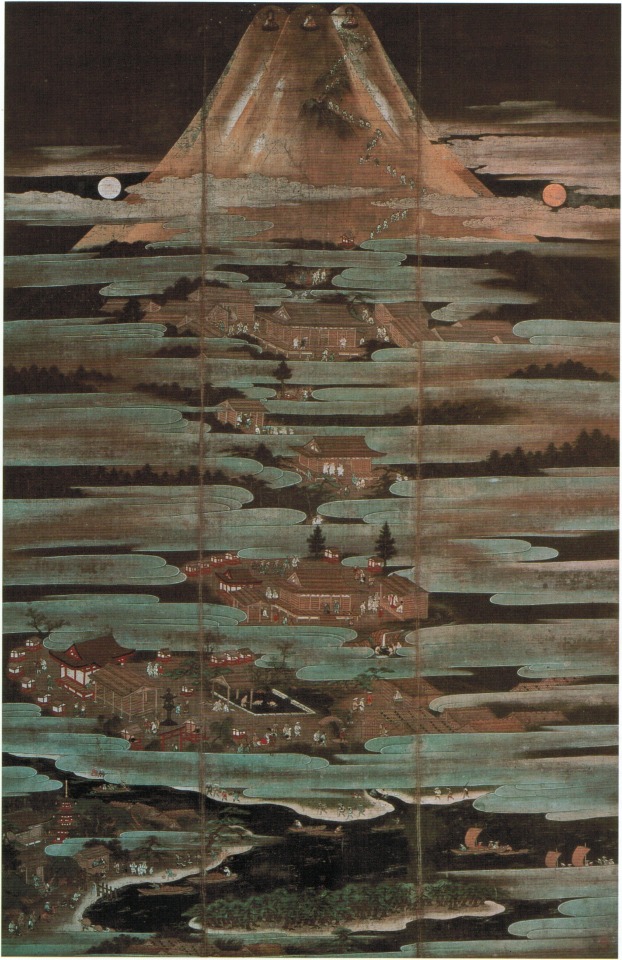
A painted example of the Fuji Mandara (富士曼荼羅), a mandala depicting the sacred landscape of Mount Fuji populated with earnest pilgrims making their way to the peaks above inhabited by three manifesting Buddhist deities
Color on silk dating to the Muromachi period (1336-1573) from the collection of Fujisan Hongū Sengen Taisha Grand Shrine (富士山本宮浅間大社) in Fujinomiya, Shizuoka Prefecture
Image from "Shintō: The Sacred Art of Ancient Japan" edited by Victor Harris, published by the British Museum Press. 2001, page 181
#japanese art#buddhist art#曼荼羅#mandala#静岡県#shizuoka prefecture#富士宮市#fujinomiya#富士山#fujisan#mount fuji#富士山本宮浅間大社#fujisan hongu sengen taisha#富士曼荼羅#fuji mandara#crazyfoxarchives#arte japonés#arte budista#monte fuji
242 notes
·
View notes
Text
This August I decided to climb Mount Fuji for the 4th time. But I came to Fujinomiya the day before the climb and tried to visit the most popular and interesting places.


I bought a ticket for GORIKI-kun (強力くん) — Fujinomiya City Routine Sightseeing Bus (afternoon course) which is available on weekends and holidays.
And in one day I managed to visit the Mt. Fuji World Heritage Centre, Shiraito Falls, Lake Tanuki, Hitoana Fuji-ko Iseki, Fuji Milk Land, Takasago Brewery, Fujisan Hongu Sengen Taisha.




I also ate yakisoba (traditional local food) and chilled in Hana-no-yu onsen.
And I even witnessed a local festival on the central street! It was a very interesting and busy day.


So I invite you to watch my new video, I hope you like it:
youtube
0 notes
Text
Япония. День четвертый
На четвертый день мы отправились на посмотреть и поклониться великой и загадочной Фуджи-сан. Добирались на поездах - совсем быстрых, средних и совсем маленьких двухвагонных. Фуджи показалась сначала в окно такого вот двухвагонника, потом чуть больше из Fujisan Hongu Sengen Taisha shrine над крышами, воротами и деревянными лисами. И снова всюду сакуры и народ в красивой одежде.
Позже вечером уже в Токио попали на суши-представление. В ресторанчик�� на шесть человек повар артистично лепил суши и выдавал поштучно. Помогала ему юная леди, по виду дочка. Есть эти суши полагалось медленно, и вся процедура заняла больше двух часов. Но красиво.
Потом чуть-чуть ночного Токио.
0 notes
Text




Visited Japan recently so I’ll be uploading my photos from my trip!!
This was in Fujisan Hongu Sengen- Taisha Shrine ✨
6 notes
·
View notes
Photo

Sunday funday. A day trip to Mount Fuji, Oshino Hakkai, Shiraito Falls & Fujisan Hongu Sengen Taisha Shrine. The more I see of Japan, the more I’m falling in love with this beautiful country #japan #daytrip #mountfuji #fujiyama #fujisan #shrine #sundayfunday (at Mount Fuji (富士山)) https://www.instagram.com/p/B4rXgYzp_uO/?igshid=fvcps33vqnqc
0 notes
Text
Yakisoba noodles are typical Japanese foods sold in food stalls. You can find them often in festivals of temples and shrines. With some reason, Fujinomiya City, a town at the foot of Mt. Fuji is famous for yakisoba noodles. Japanese people love yakisoba so much that there are championship tournaments of yakisoba. And Fujinomiya often won the tournaments.
Fujinomiya is a starting point to climb Mt. Fuji. For example, the town has a large shrine “Fujisan Hongu Sengen Taisha”. Furthermore, Mt. Fuji World Heritage Centres explains the history and the nature of Mt. Fuji. And Yakisoba noodles. So there are many reasons to visit Fujinomiya.
Omiya Yokocho – Food Court to Taste Fujinomiya Yakisoba
In front of Fujisan Hong Sengen Taisha Shrine, there is an open-air space called “Omiya Yokocho”. It literally means “Shrine Alley”. Many small shops who sell various kinds of foods gather here. And of course you can find shops which sell Fujinomiya yakisoba, too.
Open-Air “Food Court” in Fujinomiya – Omiya Yokocho Alley
Yakisoba Noodles in Fujinomiya
The water of the fountain in the above photo is the water from Mt. Fuji and it is drinkable.
Fujinomiya yakisoba contains pork and cabbage. To me, it is tasty but it seems just ordinary yakisoba. So I don’t know why it’s so special. Well, but anyway, it’s worth trying. Yes, it is yummy!
Fujisan Hongu Sengen Taisha Shrine
Just across the street from Yakisoba alley “Omiya Yokocho”, there stands a shrine Fujisan Hong Sengen Taisha. From the ancient times, Mt. Fuji has been an object of worship. And this shrine has been a centre of this Mt. Fuji belief. The main hall architecture looks not so old but it is built by Shogun Tokugawa Ieyasu during 17th Century. And the origin of the shrine is much older than that. According to the old records, it seems the shrine was built some time between 781 – 806. And the purpose to build this is to distinguish the fire caused by the eruption of Mt. Fuji.
Sengen Taisha
Sengen Taisha
Inside the property of the shrine, there is a pond called “Wakutama-ike”. The water of this pond comes from Mt. Fuji.
Wakutama-ike Pond
Mt. Fuji World Heritage Centre
There is a stunning-looking architecture near the shrine. It is where you can learn everything related to Mt. Fuji. UNESCO inscribed “Mt. Fuji, sacred place and source of artistic inspiration” in 2013, After that, Shizuoka Prefecture built this facility and it opened in 2017.
The building was designed by Pritzker-winning architect Shigeru Ban.
Mt. Fuji World Heritage Centre designed by Shigeru Ban
The object in front of the building has a very unique shape. It is upside-down Mt. Fuji. Why is it upside down? In order to find the answer, I should have taken a photo from another aspect. But fortunately, I could find the right-angle photo in Wikipedia.

By Sablier de Verrie – , 4.0, Link
Although the object itself is upside down, the reflex in the water is the very shape of Mt. Fuji. But if you go there in the middle of the day, the water in the pond is moving so you cannot see Mt. Fuji in the water. It seems that you have to be there early in the morning if you want to see Mt. Fuji before they start to move the water.
More Information on Fujinomiya
All of the places in this post are near from Fujinomiya Station of JR Minobu Line. From Tokyo Station to Fujinomiya Station, if you take Shinkansen in the middle, it takes about 2 – 2.5 hours.
Omiya Yokocho Alley Address: 4-23 Miyamachi, Fujinomiya City, Shizuoka Prefecture
Fujisan Hongu Sengen Taisha Shrine Address: 1-1 Miyamachi, Fujinomiya City, Shizuoka Prefecture Opening Hours: Nov.-Feb. 6am – 7pm, Mar.&Oct. 5:30am – 7:30pm, Apr.-Sept. 5am – 8pm URL: http://fuji-hongu.or.jp/sengen/english/index.html
Mt. Fuji World Heritage Centre Address: 5-12 Miyamachi, Fujinomiya City, Shizuoka Prefecture Opening Hours: 9am – 5pm (open until 6pm during July and August) (Closed on every third Tuesdays and between 27 Dec. – 3 Jan.) Admission: ¥300 (free of charge for 15 yrs and younger)
Other useful site: https://travel.gaijinpot.com/fujinomiya/
Yakisoba Noodles in Fujinomiya #japantravel #explorejapan #japanesefood #architecture #shrine #mtfuji Yakisoba noodles are typical Japanese foods sold in food stalls. You can find them often in festivals of temples and shrines.
0 notes
Photo

2018 has been interesting, but I think we’re all looking forward for a more... productive 2019 in all aspects of life. 🤪 . . 📸 @kayecsj . . . . . #goodbye2018 #hello2019 #newyear #newyearsgoals #newyearsresolution #travelmore #focusonself #workonself #travelgram #travel #travelphotography #photography #potrait #potraitphotography #traveldiaries #adventure #adventuregram #trip #takemeback #japan #japantravel #autumncolors #fallfashion #fashion #fashiongram #fashionphotography #marketing #marketinglife #blaggerbeasties (at Fujisan Hongu Sengen Taisha Shrine) https://www.instagram.com/p/BsA38f-AWVT/?utm_source=ig_tumblr_share&igshid=knh6xk0i0760
#goodbye2018#hello2019#newyear#newyearsgoals#newyearsresolution#travelmore#focusonself#workonself#travelgram#travel#travelphotography#photography#potrait#potraitphotography#traveldiaries#adventure#adventuregram#trip#takemeback#japan#japantravel#autumncolors#fallfashion#fashion#fashiongram#fashionphotography#marketing#marketinglife#blaggerbeasties
0 notes
Text
Tokyo, Japan
I am not sure why, but I had always been drawn to Japan. I originally went on a group tour around part of the country. Initially, I had the philosophy of only going somewhere once, unless I had already finished seeing all that I needed from the world. So far, this is the only place that I made that exception.

My first tour here ended in Tokyo, but I had only spent half a day here and had to leave first thing in the morning back home. Our hotel (Prince Park Tower Hotel or Tokyo Prince Hotel…I couldn’t remember the exact name) was near Tokyo Tower. We were not able to see as much as we wanted in that short period of time.
We booked this trip for a few reasons: It was my husband’s and my fifth anniversary together, and it was a collective birthday present for us (as we both have birthdays in April). Plus, my brother had always wanted to go during cherry blossom season.
Saturday, April 7, 2018 – Arrival
We arrived at Narita Airport on a VERY windy day (as in “first-time-getting-motion-sick-on-a-plane-type-of-windy.”) Clearing immigration and getting our bags didn’t take a lot of time. However, we were planning to get our Tokyo Rail passes at the visitors’ center, and by the time we finished with customs, the desk was closed (missed by 5 minutes, at 8:50pm). It was evening, we were tired, and I didn’t feel like figuring out the rail ticket machine. Besides, the last time I was here, the ride from the hotel to Narita wasn’t that much.
Boy was I wrong!
The charge for the taxi ride from Narita to Ginza, Tokyo, was upwards of $250!!!
Later, I was reminded that we had a shuttle from the hotel that we were at to Narita (oops).
Moral of the story here: Learn from my mistakes and do your research on transportation options before arrival.
Now that we have taken care of our PSA moment, on to the rest of the story!
We arrive at our hotel, Mitsui Garden Hotel Shiodome Italia-gai (2-14-24, Higashi-shimbashi, Minato-ku, Tokyo, 105-0021). It is minutes away from Ginza, Tokyo Tower, Zojo-ji Shrine and the Imperial Gardens. They also provided a free loaner smartphone that guests could use to make and receive calls, as well as for email, GPS and social media services. I mostly used it for GPS to navigate through the city.
We were also next door to a Lawson Station, one of the popular convenience stores – along with 7-Eleven – in the country. What was different about these convenience stores is that they carried more variety of foods, including hot food. It has been the locals’ favorite for fresh, convenient food. They are open 24 hours a day, which helps if a worker has an early 4am start or if they are just getting off of work at 10pm. Also, just like back here, there is one Lawsons’ or 7-Eleven on every other block (at least in Tokyo).
7-Eleven has their own set of ATMs, which I found to be the only ATM that worked for my Chase Card. The only downside is that the minimum amount available for withdrawal is 10,000 JPY (about 100 USD). This is important because not every place accepts credit cards. There are a good number of stores and restaurants that take cash only. This leads to PRO-tip #2: Bring cash.
Sunday, April 8, 2018: Tokyo Station, Sensoji Temple, Akihabara
So, our first stop was to acquire our rail passes (for clarity, the passes for me and my husband – my brother arrived earlier and received his already). Plus, it gave me an opportunity to test run the loaner phone from the hotel.

One of the Stores in Tokyo Station (Looks Familiar, Can’t Put My Finger on It…)
Once we had reached Tokyo Station, we were able to get our Rail Passes (yay!) The station has a number of restaurants in the lower level. Ramen Street is a stretch of restaurants in the basement level. Some will be traditional restaurants where they seat you and serve you. Others had a vending machine where you would put in the money, make a selection of what you want to eat and then it would print out the receipt for you to give your server or the cook. One such place was Rokurinsha on Ramen Street.

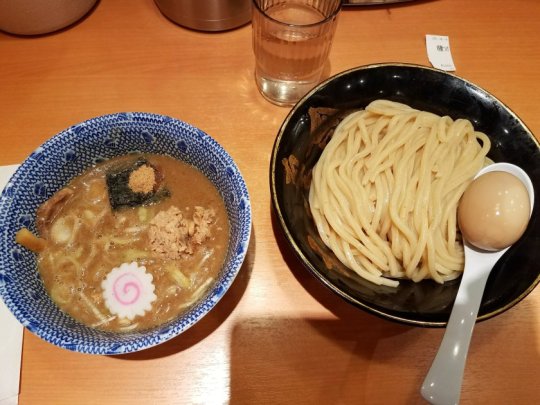
Dipping Ramen (with Tonkotsu)
Once we were fed, we continued on our trek. We started at Sensoji Temple (2 Chome-3-1 Asakusa, Taitō, Tokyo 111-0032, Japan). It was pretty crowded for a Sunday. It was a beautiful day though.
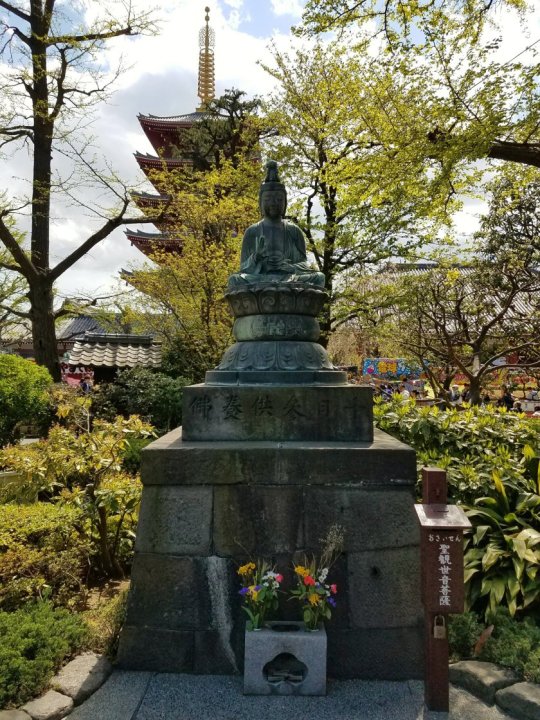

The Meiji Temple
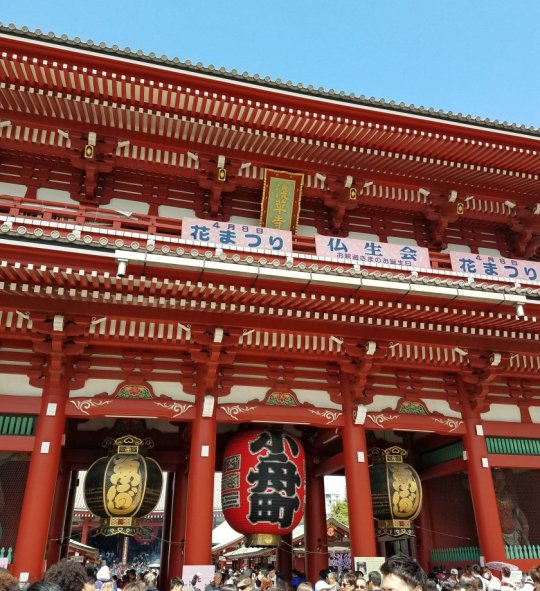
The Main Gate

Nearby Street Market
We then hopped on the rail to Ueno and onto Ueno Onshi Park. We were on a mission to find cherry blossoms. I had heard that they had already bloomed, but there were some late bloomers around still. We were lucky to find some there!
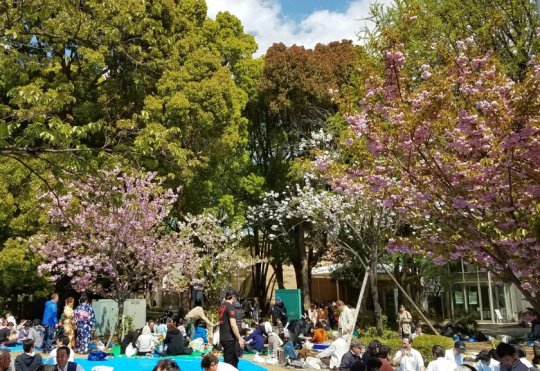
Having a Picnic Under the Sakura Trees
We also wanted to look for a cat café. According to the GPS, there was one nearby: Neko Maru Café Ueno (7 Chome Ueno, Taitō, Tokyo 110-0005, Japan). There was a fee schedule, but the one we chose was 30 minutes for $6 USD. They had coffee and tea, as well as some snacks. They also had a few bookcases so you could sit and read while surrounded by the cats. If you want, they also had kitty toys to engage with the cats/kittens in house.

Welcome to the Kitty Cafe!

Cafe Menu and Helper

There are Enough Boxes for Every Kitty!

Shh! Do Not Disturb!

This is Part of their Elevated Cat Walk

Pretty Fur-Baby!

Beautiful Bengal
Next stop: Akihabara to check out the electronics district.

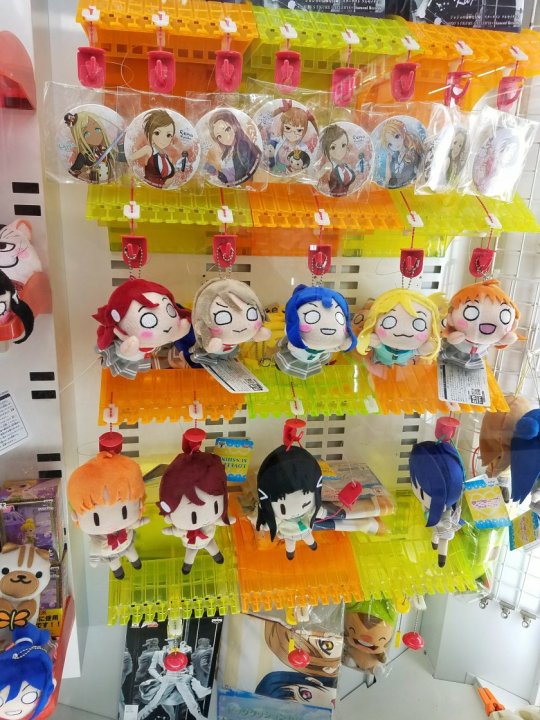
Inside the Sega Building – they have these types of games on the first 3 floors
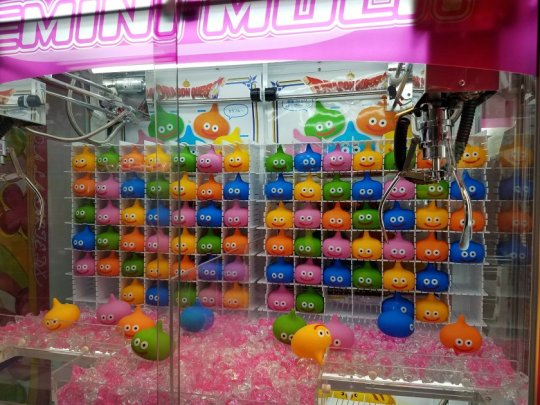
These Remind me of the Slime blog-things in Dragon Quest
The streets were closed for the shoppers.

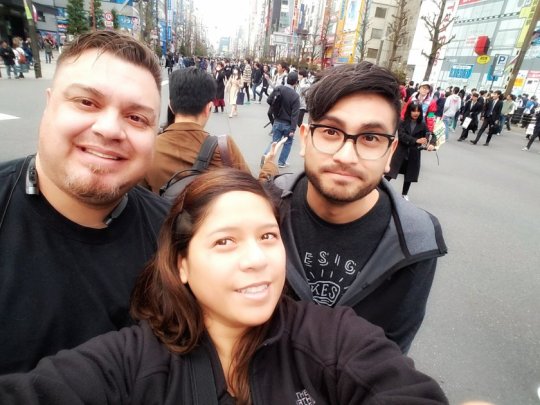
Proof of Life!

Interesting KitKat Variety
We noticed that some electronics were more expensive there than online. Only exception seemed to be those from Japan, and the prices seemed more fair.
After some shopping, we started back towards home for dinner and to sleep off some of the jetlag.

Salmon with Rice, Miso Soup, Pickles, Salt Cod Roe, and Egg
Monday, April 8, 2018: Mt Fuji
We went on a day tour through JAPANiCAN. Our first stop was the Mt Fuji 5th Station.
Unfortunately, we didn’t have as clear a view as we had hoped. It was also 1 degree below Centigrade when we were there, so just a little cold!

Mt. Fuji is Behind those Clouds Somewhere!
Next stop was at Oshino Hakkai. The snowmelt from Mt. Fuji formed several fresh water springs in the area. It’s also a cute little village where we were able to get another view of Mt. Fuji. The sun had come out and some of the clouds were starting to clear.

Mt. Fuji is starting to Peek Out thru the Cloud Cover!
There were some shops along the street – some selling food, others selling souvenirs.


These were very yummy BBQ Beef Skewers
Our next stop was Shiraito Falls. The falls are fed by the snowmelt from Mt. Fuji also. There were also a number of shops in the area, including soft serve ice cream.

Green Tea/Vanilla Mixed
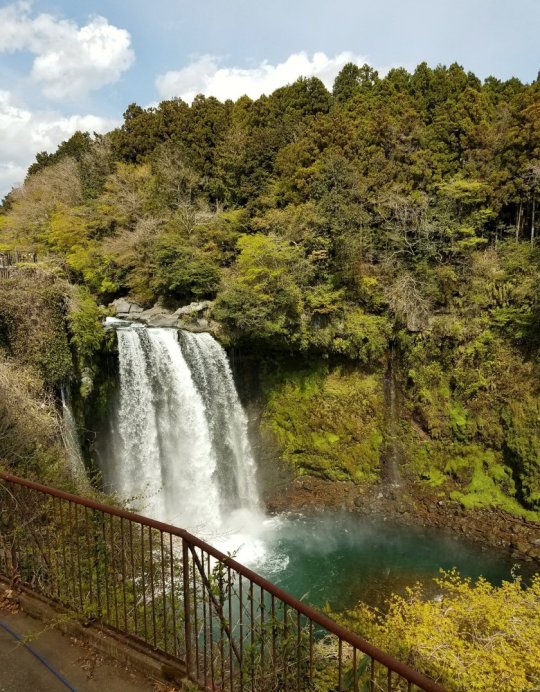

Main Waterfall
Fujisan Hongu Sengen Taisha Shrine. The head shrine for Sengen and Asama shrines throughout Japan.


Shrine Entrance



The White Ties and Wooden Tags are All Wishes

Shrine’s Lagoon

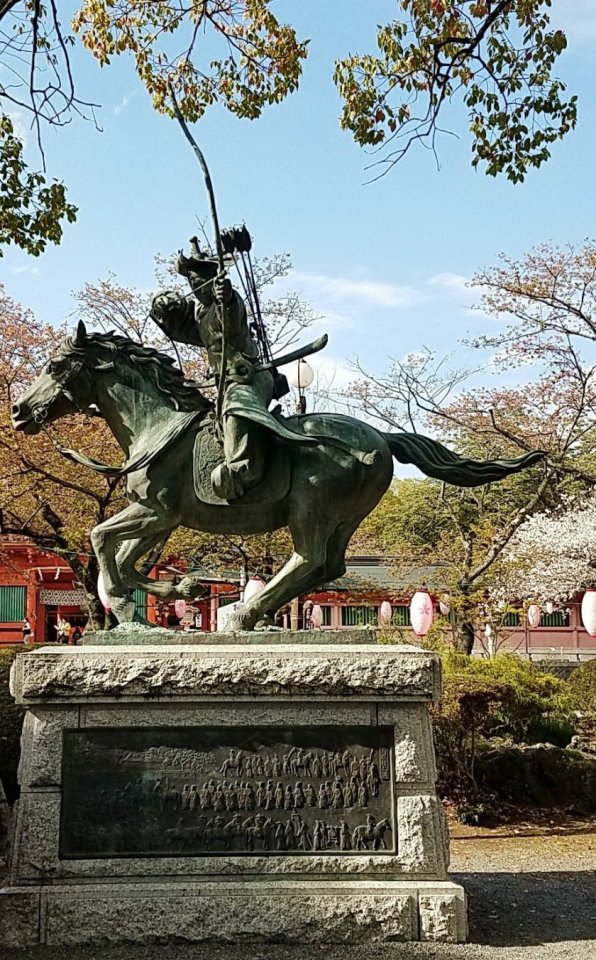

A Much Clearer View!
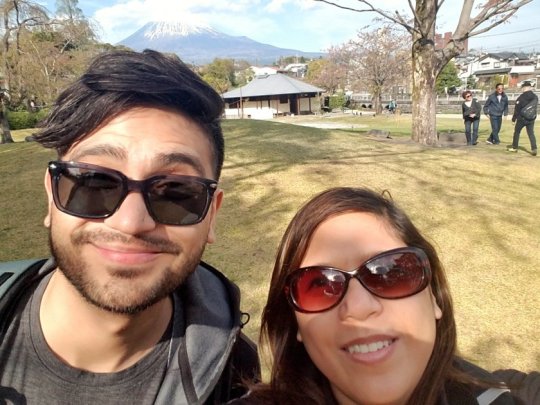
Happy With the Sight!
On our way back, our tour guide informed us that Mt. Fuji can be clearly seen 60 to 65 days out of the year (so we were lucky!)
For dinner, we stopped by one of the restaurants nearby our hotel – Akami Yakiniku Horumondokoro Nikuman. (1-23-6 Hamamatsucho, Minato 105-0013, Tokyo Prefecture).

We were seated at the bar. Each table/seat had a mini grill and a vent right above it. We decided to share the Tonya place.
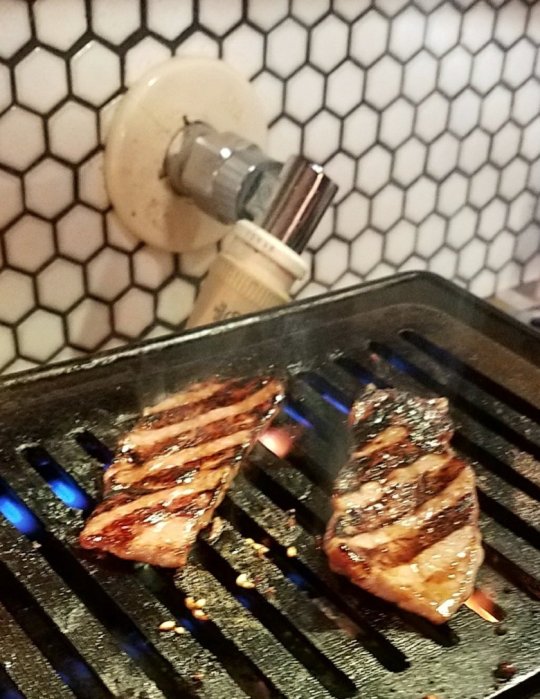
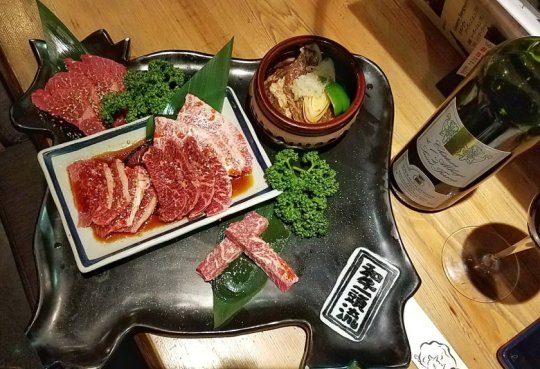
Since the meat is thinly sliced, it was cooked quickly.
With full stomachs after a full day, sleep came easy.
Tuesday, April 10, 2018: Tsukiji Fish Market, Namiyoke Inari Shrine, Hachiko Memorial Statue, Shibuya Crossing, Meiji Shrine, Ginza
Tsukiji Fish Market is a famous market located in Central Tokyo. It is the largest wholesale fish and seafood market in the world. As part of development for the upcoming Olympics in Tokyo 2020, the fish market is slated to be moved Toyosu, Kotu in the Fall of 2018. If you can get there anywhere from 3am to 5am, you can observe the tuna auction (we opted not to do that). If you do decide to go, it is highly recommended to wear rubber boots.
There is two parts of the market – the Inner Market, where wholesale vendors are located, and the Outer Market where people like us can purchase items in more manageable numbers.

Tea Vendor
We wanted to find one, if not two places to eat. So our first place was here (apologies, I’m not sure what it translates in English).

I felt like we were lucky because it wasn’t so crowded here, nor was there a line for us to wait in. As far as the food goes, I had once heard that “Fish should taste like the sea, and if it doesn’t, then it is no longer good.” The fish that we had here tasted exactly like the sea and I was extremely happy.

Traditionally Wasabi is In Between the Fish and the Rice (and they used FRESH Wasabi!)
After our sushi brunch, we continued walking through the market. Where a variety of items were up for sale as you can see here:
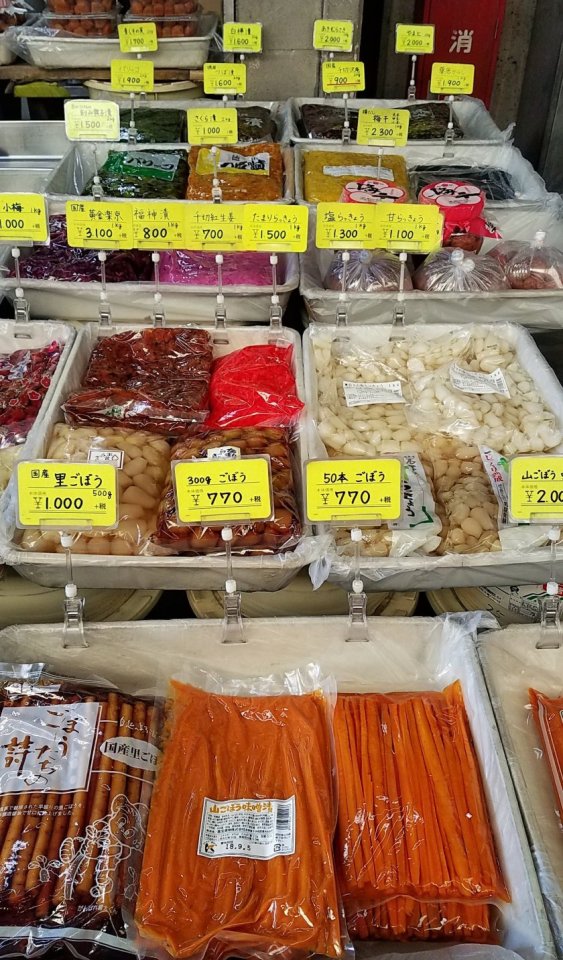


We came across another set of restaurants with long lines.


Apparently people lined up since opening to eat at these places.
After a few hours of walking and shopping, we decided to try another sushi place. This was located just outside the market, called Iwasa Sushi (6 Chome-27-3 Tsukiji, Chūō, Tokyo 104-0045, Japan). Incidentally it was highly rated on tripadvisor.com, so we wanted to see if it lived up to the hype. They have a set menu, and you basically choose between three or four different sets of sushi combinations. They only have seats at the sushi bar and they only accept cash.


Our Sushi Chefs

When we were done, I made a quick stop at Namiyoke Inari Shrine. Its name literally means “protection from waves.”

After that, we dropped off our purchases at the hotel and headed towards Shibuya.
Our first stop outside the Shibuya Station was the Hachiko Memorial. Hachiko was an Akita dog that was owned by Professor Ueno Hidesaburo from Tokyo Imperial University. Hachiko would meet Professor Ueno at Shibuya Station at the end of the day, and it became their routine. One day, Professor Ueno had a cerebral hemorrhage at the University, and never came home. However, Hachiko would go to the station every day for almost ten years. This statue is a symbol of the loyalty and love that Hachiko had for Ueno. Fun fact: Hachiko was present when the statue was unveiled.

There was a LONG line for taking pictures with the statue, so I improvised. The important thing was that I was there.

Now, there is a famous intersection near this statue that maybe the busiest intersection in the world: Shibuya Crossing. The lights turn red/green at the same time to control the pedestrian traffic. Even though there are crosswalks, when the light turns green, the intersection gets swarmed by people.
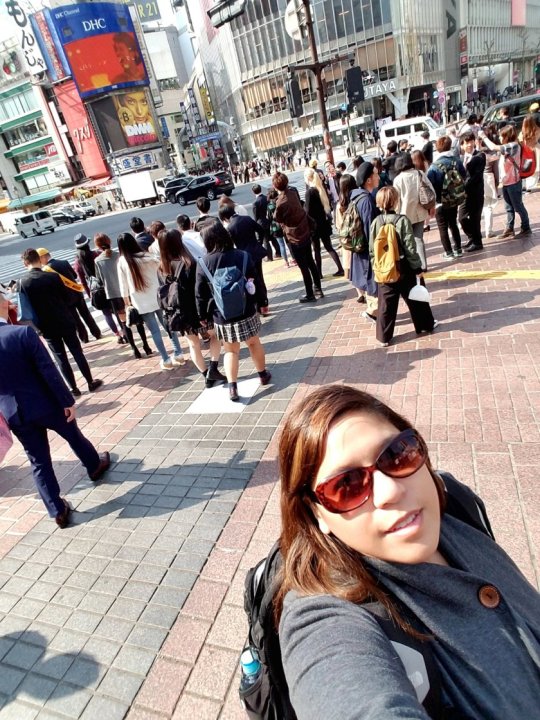
We crossed and survived (phew!)
We were walking through Shibuya in order to get to Meiji Shrine. In our walk, we encountered these:
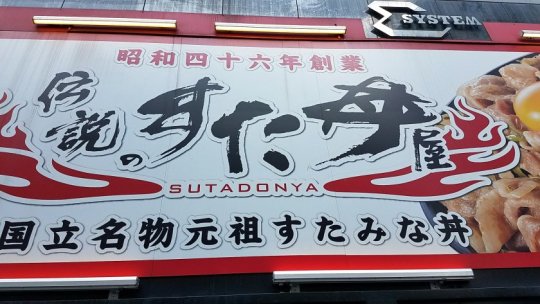
For Those Who are Familiar with Sutadonya at Mitsuwa in Arlington Hts…
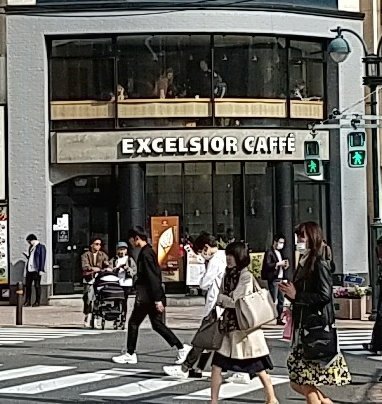
Stan Lee would Approve!
Meiji Shrine is a Shinto Shrine that is surrounded by a forest, and was built to honor Emperor Meiji and Empress Shoken.


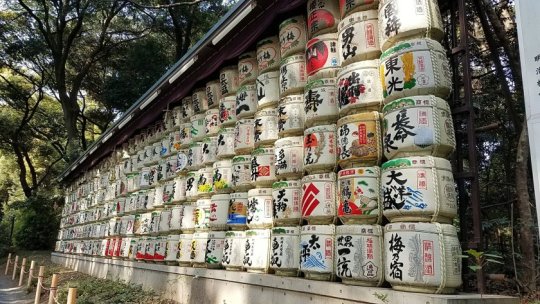
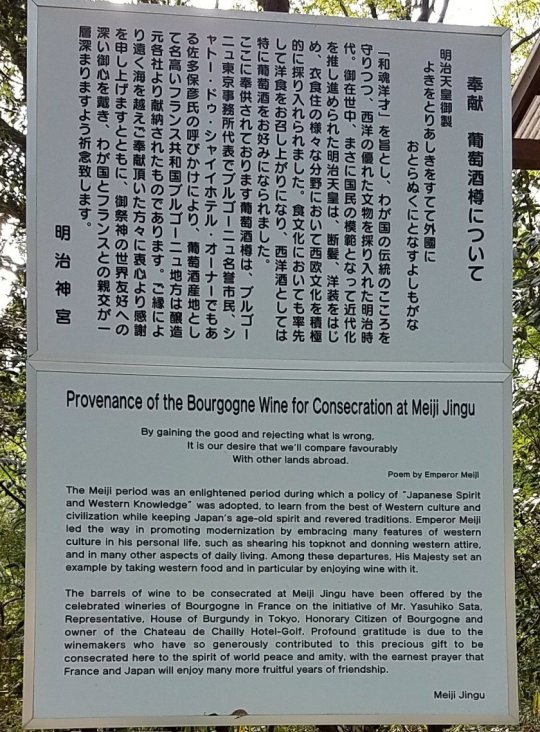

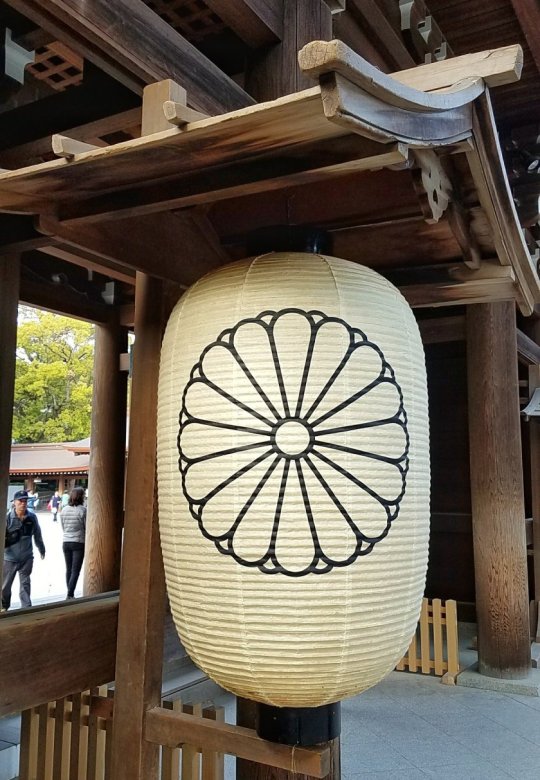

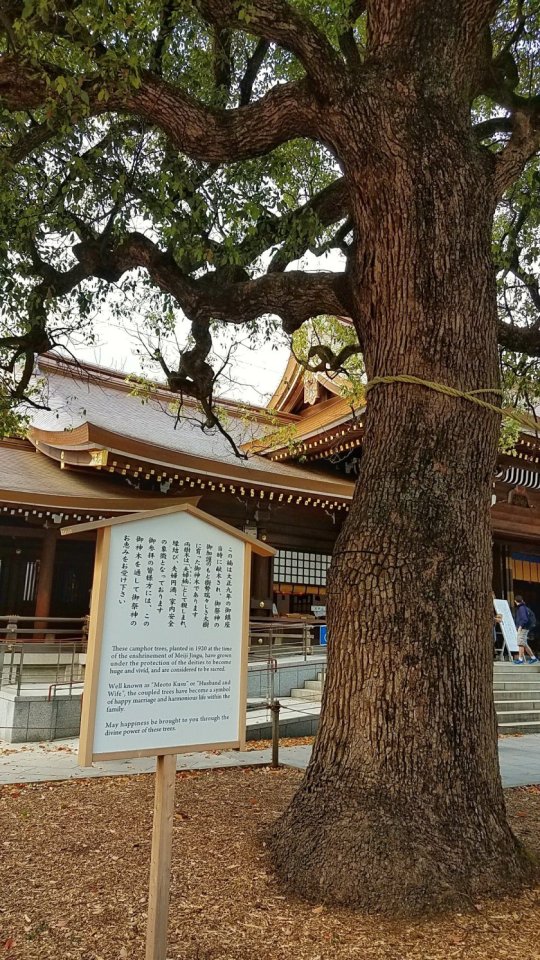
Camphor Tree

After that, we went back to our hotel to freshen up a bit before dinner: Itamae Sushi, Ginza Corridor (J Bld.1F, 8-2-13, Ginza, Chuo, Tokyo, 104-0061, Japan).
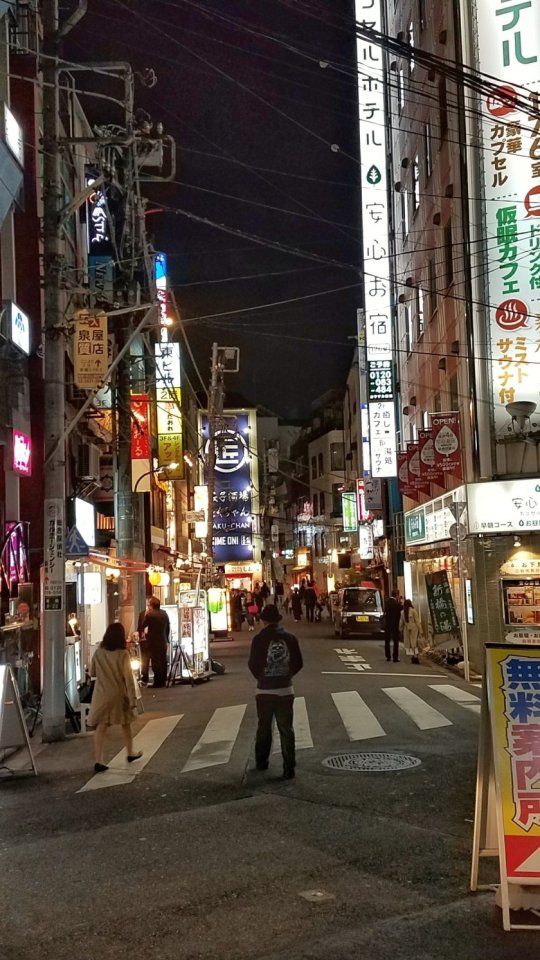
The City Never Sleeps!


Our Sushi Chefs at Ita Mae Sushi


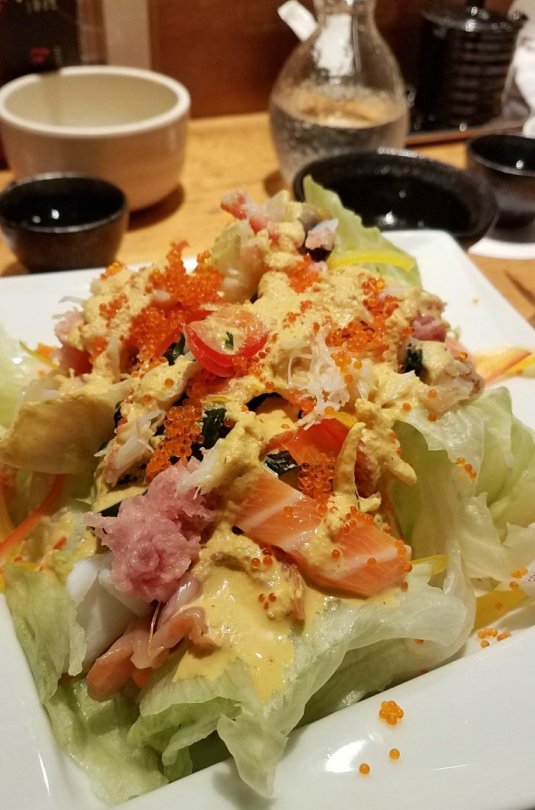
Fresh Seafood Salad
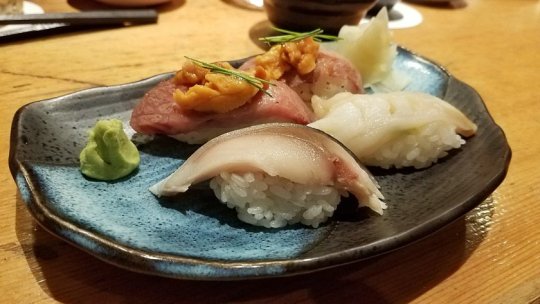
Sushi!

Menu Said “Live Squid” but I think they meant “Raw Squid” with Wasabi vinagrette (it was still good!)
So far, the only critique that I had was that they used powdered wasabi (what can I say, I was spoiled from the fresh wasabi from earlier today). However, the taste made up for it. I would have to say that the first place we ate at today and Itamae Sushi were the better of the three places we ate today. Wednesday, April 11, 2018: Zojo-ji Shrine, Tokyo Tower, Departure
We had a half day left here in Tokyo. I decided to do a quick stop at Zojo-ji Shrine and Tokyo Tower before we left. There is also a mausoleum where the most loyal samurai are buried as well.


If Zojo-ji Shrine looks familiar, its because it was in the movie “Wolverine” (2013)


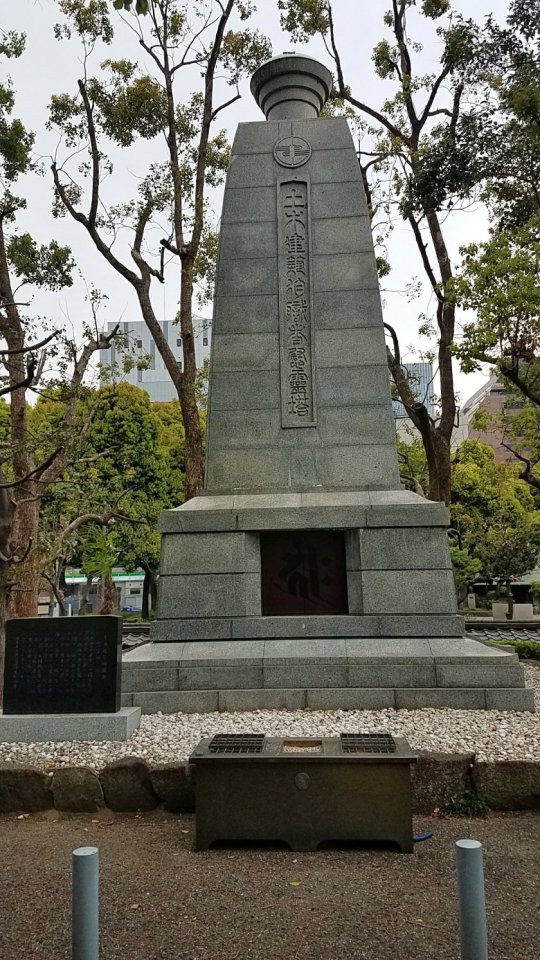


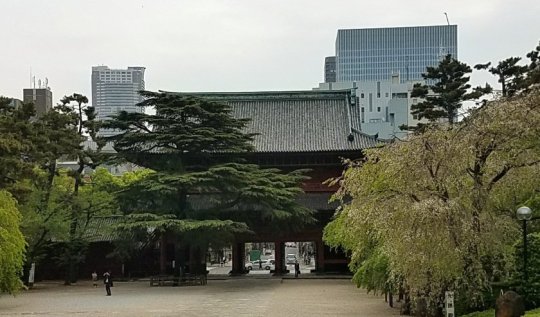

And Here I Have Come Full Circle!
In case you were wondering what I was doing at all those shrines, it was because of this: my notebook filled with Goshuin, which are unique stamps/seals and calligraphy from the temples that I had visited. I had been introduced to this during my first visit here and acquired quite a collection!
Alas, our trip had come to an end, but our hearts are full with the memories that we had made. Thank you for reading, and I hope that this inspired you for your next adventure!
–Maeven
Resources:
Mitsui Garden Hotel Shiodome Italia-gai. 2-14-24, Higashi-shimbashi, Minato-ku, Tokyo, 105-0021 https://www.gardenhotels.co.jp/shiodome-italiagai/eng/
Lawson Station (various locations). http://lawson.jp/en/
7-Eleven (various locations). http://www.sej.co.jp/in/en.html
Tokyo Station http://www.tokyoinfo.com/en/
Rokurinsha. https://www.yelp.com/biz/YD4NquiK0mPR_WMse5KPOA?utm_campaign=www_business_share_popup&utm_medium=copy_link&utm_source=(direct) http://www.rokurinsha.com/ (Japanese)
Neko Maru Café Ueno. http://www.nekomarucafe.com/index.html
1-Day World Heritage Mt. Fuji Tour. https://www.japanican.com/en/tour/detail/BUS1J00711MKS/?typecd=TOU&destcd=V21&kw=golden&sbit=4&typegrpcd=TPA
Akami Yakiniku Horumondokoro Nikuman. 1-23-6 Hamamatsucho, Minato 105-0013, Tokyo Prefecture. https://www.tripadvisor.com/Restaurant_Review-g1066451-d6047847-Reviews-Akami_Yakiniku_Horumondokoro_Nikuman-Minato_Tokyo_Tokyo_Prefecture_Kanto.html
The Tsukiji Fish Market. 5 Chome-2-1 Tsukiji, Chūō, Tokyo 104-0045, Japan. http://www.tsukiji-market.or.jp/tukiji_e.htm
Hachiko Memorial Statue. 1 Chome-2 Dogenzaka, Shibuya, Tokyo 150-0043, Japan.
Hachiko. https://en.wikipedia.org/wiki/Hachik%C5%8D
Meiji Shrine. 1-1 Yoyogikamizonocho, Shibuya, Tokyo 151-8557, Japan. http://www.meijijingu.or.jp/english/your/1.html
Itamae Sushi. J Bld.1F, 8-2-13, Ginza, Chuo, Tokyo, 104-0061, Japan. http://itamae.co.jp/english/
Zojo-ji. 4丁目-7-35 Shibakoen, Minato, Tokyo 105-0011, Japan. https://www.zojoji.or.jp/en/
Tokyo Tower. 4 Chome-2-8 Shibakoen, Minato, Tokyo 105-0011, Japan. https://www.tokyotower.co.jp/en.html
Wanderlust Wednesday: Trip to the Land of the Rising Sun Tokyo, Japan I am not sure why, but I had always been drawn to Japan. I originally went on a group tour around part of the country.
0 notes
Text
Toyohashi man, 93, was oldest to summit Fuji in 2017
Toyohashi man, 93, was oldest to summit Fuji in 2017
The oldest person to climb Mount Fuji last year was 93-year-old Masashi Toyoda, from Toyohashi, Aichi Prefecture, according to records at Fujisan Hongu Sengen Taisha, a shrine at the foot of the mountain. “My body is not as strong as before, but I would like to climb (Fuji) again this year,” said Toyoda enthusiastically. Every year from July to September, Sengen Taisha, located in Fujinomiya,…
View On WordPress
0 notes
Video
Fujisan Hongu Sengen Taisha por Izu navi Por Flickr: Fujisan Hongu Sengen Taisha
#Shizuoka#Shizuoka Prefecture#Fujinomiya City#Fujinomiya#Fujisan Hongu Sengen Taisha#Fujisan Hongu Sengen Taisha Shrine#sengen taisha#shinto shrine#shrine#Japan#World Heritage Site#Fujisan#sacred place and source of artistic inspiration#pond
0 notes
Text
Travel of Japanese people has a deep connection with Mt. Fuji. The first travel agents in Japan therefore are related to Mt. Fuji, too. There are many ways of travels – visiting friends and relatives, sightseeings, hiking, etc. Pilgrimage is also a kind of travels. In old days in Japan when the public transport was not yet improved, it was of course very difficult for Japanese people. They did not travel very often and travels were very special activities.
They traveled only on special occasions. Such special trip often involved religion. Mt. Fuji was one of those religious destinations for Japanese people. By 12th Century, Mt. Fuji already became the subject to worship. But travels at that time were not easy. It took many days to reach to the destinations and it cost a lot. Not everybody could afford to travel. Therefore, people made a group called Fuji-ko, collected membership fees and chose their representative who would go climb Mt. Fuji on behalf of their Fuji-ko Group. When the representative traveled, Oshi the travel agent made arrangements.
At the foot of Mt. Fuji, there were many houses of Oshi who offerred their places to those who came to worship Mt. Fuji.
Worshippers traveling to Mt. Fuji
The houses of Oshi were inns for travellers and Oshi arranged tours to Mt. Fuji and also engaged in missionary work. There were Oshi not only in Mt. Fuji area but also other places such as Ise Jingu Shrine, Kumano Shrine, Izumo Shrine and such mountains as Oyama and Hakusah which were subjects to worship. So Oshi is considered as a first form of travel agents in Japan and travels to Mt. Fuji or other religious places were the first styles of travels in Japan.
I knew about Oshi but I did not know that they are in today’s world. At the time of the Fire Festival, I walked along the street in front of Fujisan Hongu Sengen Taisha Shrine, and I was surprised to see there still remained many Oshi‘s residences.
The Entrance of Oshi Family Jomonji
A pile of woods is a torch for the Fire Festival. Oshi families play a significant role during the festival and they dedicate torches.
The Entrance of Oshi Family Jomonji
The Residence of Oshi Family Jomonji
Nakaganmaru’s residence has a large traditional gate.
Oshi Family Nakaganmaru
They offerred udon noodle of this region to visitors like they used to do centuries ago.
Udon noodle of Family Nakaganmaru
There were antique furnitures inside the house.
The culture of the religious trips is inherited today in many ways. Travel agent is one thing. And souvenir is another thing. In Japan, you may notice that wherever you visit, there are some foods (in many cases, sweets) original to that region. The origin of such souvenir is a proof to visit the place. Since only a representative of Fuji-ko Group could go on a trip to Mt. Fuji guided by Oshi, on his way back, he bought local sweets that proved his visit and delivered them to other members of his Fuji-ko Group. So souvenirs are the evidence of the travels. That’s why every region has their own special foods.
Here is a popular souvenir of Mt. Fuji area. It is called Shingen-mochi, a kind of a rice cake.
Shingen-mochi rice cakes with soy beans powder
First Travel Agents in Japan - Oshi in Mt. Fuji. #mtfuji #fujisan #japantravel #shizuoka Travel of Japanese people has a deep connection with Mt. Fuji. The first travel agents in Japan therefore are related to Mt.
0 notes
Photo

富士山本宮浅間大社 (Fujisan Hongu Sengen Taisha)
20 notes
·
View notes
